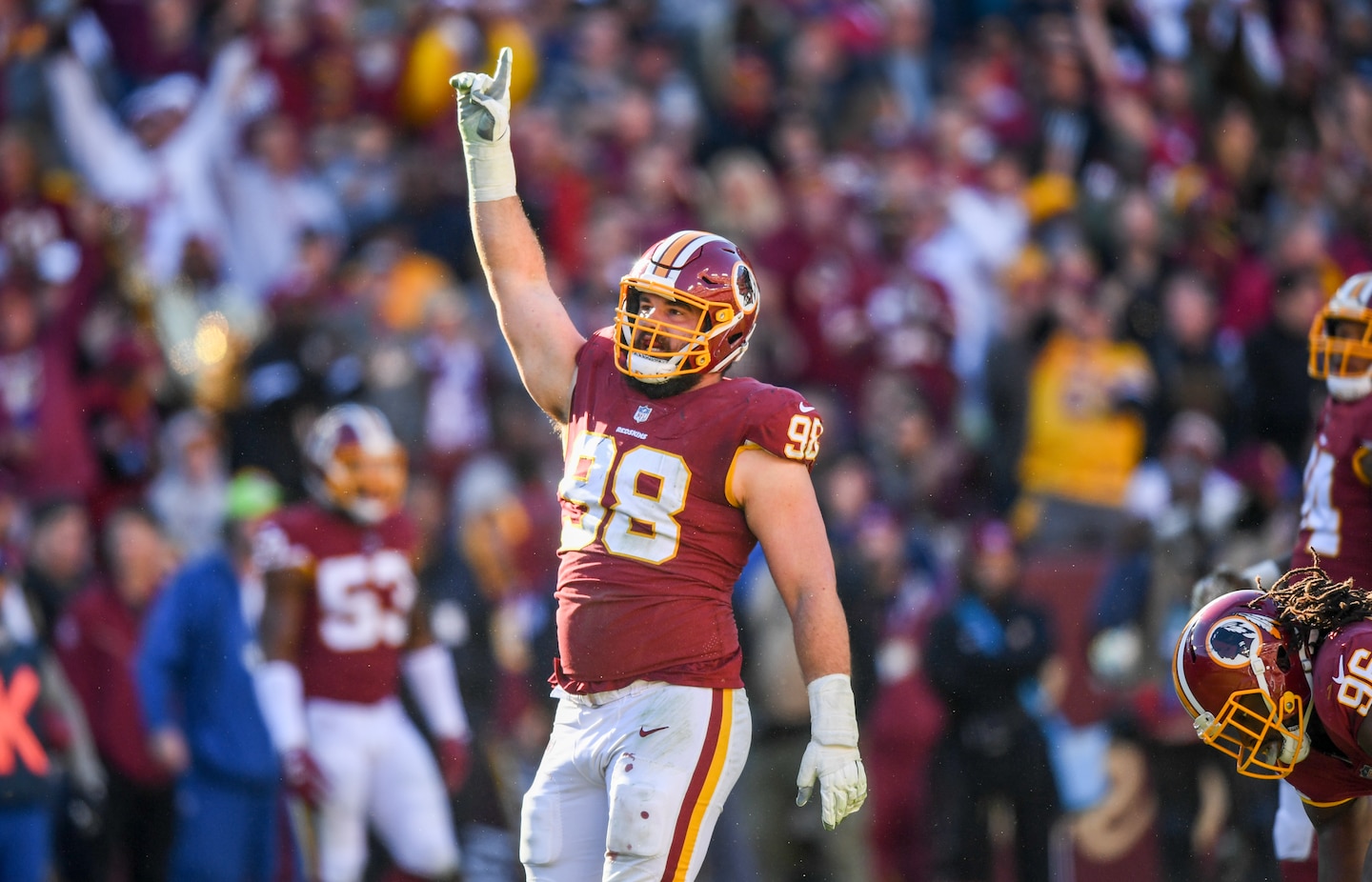For Washington’s defense, new scheme and communication issues among five biggest questions

And yet when one stops to think about the team itself — not an easy task considering the impending name change, the troubling revelations about the organization’s culture and the sport’s uncertainty amid a global pandemic — there’s reason to believe this year’s defense could be different.
Start with the team’s hiring of Coach Ron Rivera and his hiring of defensive coordinator Jack Del Rio. The two well-regarded defensive minds switched the base defense from 3-4 to 4-3, spent big in free agency on a defender (cornerback Kendall Fuller), drafted the NFL draft’s consensus best player (edge rusher Chase Young) and assembled complementary pieces.
Despite this progress, questions remain. Let’s discuss five, with the start of training camp less than a week away.
1. How will the new scheme change the defense?
The hype about the 4-3 might be overblown. Offenses leaguewide used three or more receivers about 63 percent of the time last season, according to Sharp Football Stats, which means Washington will often use sub-packages. What the scheme will change is the unit’s aggression.
Under former defensive coordinator Greg Manusky, Washington played a more passive, bend-don’t-break style, especially in the middle. Now, Del Rio will change the tone and ask his players to attack. He will unleash the strength of this unit, the defensive line, and it could lead to upticks in production for interior rushers Jonathan Allen, Daron Payne and Matt Ioannidis.
2. Why could this year be any different?
Washington has the vision and the personnel. In 2018, when Washington was in the playoff hunt before Alex Smith broke his leg, Payne and Allen played almost every snap. But now Washington’s defensive line is talented and deep. Inside, the top three have more than capable backups in Tim Settle and Caleb Brantley, and outside, the team features Chase Young, Montez Sweat and Ryan Kerrigan. This is what Rivera meant when, before the draft, he said “strengthening strengths” was a priority.
Now, Washington has molded its defensive identity around the front, and its depth at the position could help compensate for a relative lack of it at linebacker and in the secondary.
3. Who steps up in the secondary?
Entering camp, Washington has two surefire starters behind their stout front: strong safety Landon Collins and Fuller. Even then, it’s unclear whether Fuller will play inside, outside or a combination of both. But bigger questions remain at free safety and the second and third cornerback spots.
At free safety, presumptive starter Sean Davis is one of the several players Washington signed to a one-year deal. While he has the range and speed for the position, he also has played in only one game since December 2018 because of a shoulder injury.
At cornerback, the likeliest starter opposite Fuller is Fabian Moreau, who replaced Josh Norman last season. Beyond them, there are two groups: Uncertain veterans (Ronald Darby, Aaron Colvin) and unproven youngsters (Jimmy Moreland, Danny Johnson, Greg Stroman). The competition seems open for the third spot. Collins is high on Moreland.
“Jimmy was supposed to have seven picks last year,” the safety said in May. “That was just off of athletic ability. … I was like. ‘Wow, he is going to be special.’ ”
4. How will Washington configure its linebackers?
In the 4-3, there are three linebackers: Middle, or Mike, which usually leads the defense and is the biggest and strongest linebacker; weak-side, or Will, which usually lines up away from the tight end and is tasked with more blitzes and coverages; and strong-side, or Sam, which usually lines up over the tight end, must stop the run and is bigger than the average Will.
Washington has options. At Mike, it re-signed last year’s starter, Jon Bostic, but someone younger, such as Cole Holcomb — the versatile rookie on last year’s defense — could slide into the spot. Holcomb could also play outside, as could Shaun Dion Hamilton, Kevin Pierre-Louis or Thomas Davis, a 16-year vet who could help the defense’s communication even though he’s an occasional pass-defense liability.
The big unknown is Reuben Foster, who suffered a devastating leg injury last training camp. In April, Rivera said Foster’s rehab “looked good” but “we’re not counting on anybody yet.”
Perhaps the toughest member of the position group to classify is Ryan Anderson. The fourth-year pro is, at 6-foot-2, 255 pounds, bigger than most linebackers but not as big as most edge rushers. He excels at stopping the run but has been exposed in coverage. If he stays a linebacker, the most natural fit would be Sam.
5. Can Washington finally — finally — fix its communication issues?
Schematic changes might not mean much if the presnap miscommunication that’s plagued the defense for years persists. While it’s difficult to quantify now whether communication has improved — players haven’t yet worked out on the field together — two defenders have said that Del Rio’s defense is simpler than Manusky’s.
Just as encouraging to players, the new coaches understand Washington’s past troubles. They’ve been detail-oriented in meetings. Earlier this spring, Del Rio emphasized to reporters that communication is “one of the issues that is apparent when you look at the tape.”
“I do believe [communication] is very, very important,” he added, “and we will be stressing it from Day 1.”
Read more:






